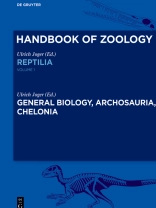With more than 10, 000 known species, recent reptiles (excluding birds) are the most specious tetrapod class. Their diversity is high, and many of them are frequently used as model organisms in phylogeographic and ecological studies. On the other hand, unique aspects of their biology are still being studied and important contributions to their understanding have just been issued. These aspects include the evolution of viviparity and of venom glands, metabolic regulation in poikilotherms, their ecophysiological tolerance and neurobiological and sensorial capacities such as infrared imaging and chemosensitivity. Genetic and developmental phenomena such as parthenogenesis and temperature-dependent sex determination are also special to reptiles. They are generally important for understanding evolutionary processes in vertebrates.
The latest results of worldwide research on dinosaurs and other fossil reptiles, crocodiles and turtles conclude this first volume of Reptilia in the Handbook of Zoology.
Daftar Isi
Tentang Penulis
Ulrich Joger, Natural History Museum, Braunschweig, Germany












